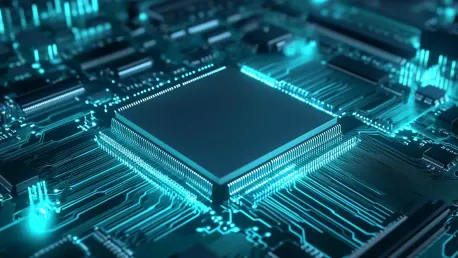The unveiling of Alibaba’s DAMO Academy’s first server-grade RISC-V processor, the C930, has sparked significant interest in the high-performance computing world and posed a potential challenge to Intel Xeon and AMD EPYC CPUs. Announced in Beijing, the C930’s introduction signifies not only a technological leap but a strategic move to reduce China’s dependency on foreign chip suppliers, especially amid escalating US trade restrictions. The open-source design of the RISC-V architecture permits manufacturers to customize without the burden of licensing fees or geopolitical risks, contrasting with proprietary architectures like x86 and Arm. This milestone places Alibaba at the forefront of China’s quest for technological self-sufficiency and innovation.
A Technological Milestone
The C930 Processor
The C930 processor is part of Alibaba’s ambitious XuanTie RISC-V series. It follows the lineage that began with the C910 in 2019 and continued with the C920 in 2023. This progression demonstrates Alibaba’s unwavering commitment to advancing their chip technology. The RISC-V architecture’s open-source nature provides a structural benefit, allowing for unrestricted customization and enhancement. The importance of this cannot be understated, especially considering the increasing technological sanctions that pose significant barriers to accessing American-designed chips.
Moreover, the launch of the C930 is more than just a response to external pressures; it signals an aggressive push for innovation within China. The tech giant has announced a staggering investment of 380 billion yuan ($52 billion) over the next three years to reinforce its AI and cloud infrastructure capabilities. This funding will support the construction of new data centers across China, catering to the burgeoning demand for AI models and cloud services. Such a hefty investment, which surpasses Alibaba’s total AI infrastructure spending over the past decade, underscores the critical role that AI and cloud computing play in driving technological advancement and economic growth within China.
Strategic Independence
China’s strong push for homegrown high-performance computing solutions stems from the need to mitigate risks associated with foreign dependencies. Alibaba’s efforts are part of a broader strategy that includes other major industry players like Huawei, Tencent, and the Chinese Academy of Sciences. Each entity contributes to a national effort to ensure technological sovereignty. Huawei, renowned for its advancements in telecommunications, and Tencent, a leader in social media and cloud services, are pivotal in this collective drive. The Chinese Academy of Sciences, however, stands out with plans to introduce its XiangShan CPU, further illustrating the nation’s comprehensive approach toward innovation and technological independence.
The implications of these developments extend beyond national borders, reshaping the global tech landscape. The march towards self-reliance in technology exemplifies China’s acute awareness of the geopolitical and economic challenges that lie ahead. These strategic investments not only foster local innovation but also position China as a formidable competitor in the global semiconductor market. The launch of the C930 processor in 2025 aligns with these broader objectives, promising to fortify China’s presence and influence in the sector. This dynamic underscores a pivotal shift, reflecting a future where China’s technological advancements could potentially influence global markets and industries.
The Future of AI and Computation
Investment in AI and Cloud Infrastructure
Alibaba’s aggressive investment venture, aimed at bolstering AI and cloud infrastructure, represents a significant leap towards technological maturity. The extensive capital injection of 380 billion yuan over the next three years is directed towards establishing new data centers and enhancing existing facilities. This strategic move aims to meet the rising demand for AI-driven models and cloud services, particularly from innovative startups like DeepSeek. The concerted effort to enhance AI infrastructure showcases Alibaba’s resolve to be at the forefront of AI advancements, while also supporting China’s broader goals of technological self-sufficiency.
This investment exceeds Alibaba’s total expenditure on AI infrastructure over the past decade, highlighting the importance and urgency of developing robust AI capabilities. The proliferation of AI technologies demands substantial computational resources, making cloud infrastructure a critical component. Alibaba’s focus on building state-of-the-art data centers across China is not just about expansion, but about creating a resilient and scalable environment that can accommodate the complex needs of modern AI applications. The outcomes of such initiatives are expected to have far-reaching impacts, solidifying China’s stature in the global AI and cloud computing arenas.
Broadening Horizons
Alibaba’s DAMO Academy has unveiled its first server-grade RISC-V processor, the C930, generating substantial interest in the high-performance computing community and presenting a potential challenge to Intel Xeon and AMD EPYC CPUs. Announced in Beijing, the introduction of the C930 marks not only a technological advancement but also a strategic endeavor to decrease China’s reliance on foreign chip suppliers, particularly in the midst of intensifying US trade restrictions. The open-source nature of the RISC-V architecture allows manufacturers to customize without the constraints of licensing fees or geopolitical risks, a significant deviation from proprietary architectures like x86 and Arm. This pivotal development positions Alibaba at the leading edge of China’s determined pursuit of technological independence and innovation. The C930’s emergence could signal a shift in the global processor landscape, offering a viable alternative to dominant players and reinforcing China’s growing capabilities in semiconductor technology.









